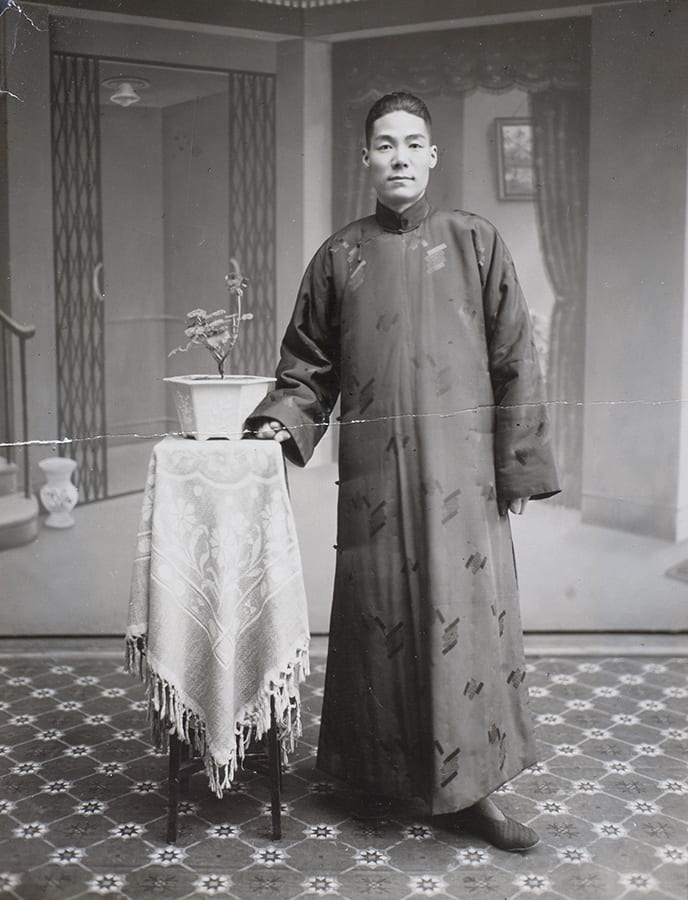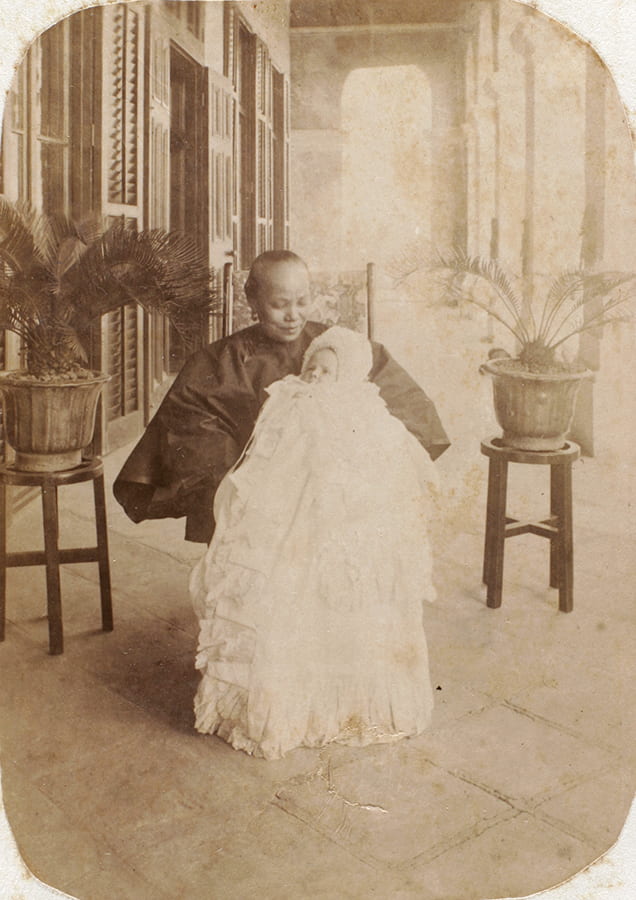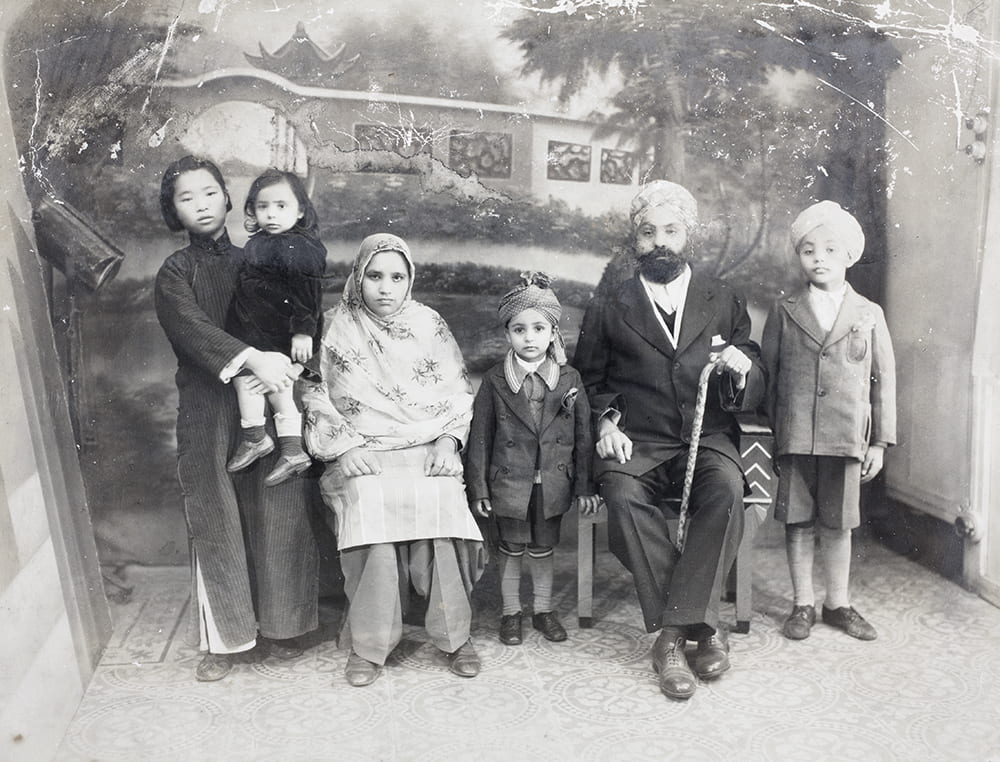Claire Lowrie is a Senior Lecturer in History at the University of Wollongong, Australia. She is the author of Masters and Servants: Cultures of Empire in the Tropics (Manchester University Press 2016) and the co-author of Colonialism and Male Domestic Service across the Asia Pacific (Bloomsbury 2019, paperback 2020) with Julia Martínez, Frances Steel and Victoria Haskins. Claire is currently undertaking a new research project titled ‘Ayahs and Amahs: Transcolonial Servants in Australia and Britain 1780-1945’ with Victoria Haskins (University of Newcastle, Australia) and Swapna Banerjee (Brooklyn College, City University of New York). The project is funded by the Australian Research Council (DP200100375).
My research focuses on Chinese migrants, both men and women, who were employed as servants in colonial Southeast Asia and northern Australia. Domestic service is a challenging topic to research given that domestic workers have left behind almost no first-hand accounts. In order to access their stories, historians need to take a creative approach to our source material. Historians of domestic service are proficient in the art of critically analysing employers’ accounts to locate clues about servants’ perspectives. They collect precious fragments of servants’ lives located in government archives, such as court records. They also make use of sources of visual culture, including photographs.
The mass digitisation of archival records in the last twenty years or so has brought to light thousands of photographs of Chinese domestic workers, with more being archived and digitised each year. A simple key word search for ‘servant’ returns 128 results in the Historical Photographs of China (HPC) archive alone. Most of the HPC photographs include servants employed in British homes, particularly in Hong Kong and within the foreign concessions of Shanghai, Fuzhou and Tianjin. Images of male domestic servants, referred to by British colonists as ‘houseboys’ or ‘boys’, and images of amahs, nursemaids to children, recur. Figures 1 and 2 provide illustrative examples of the kinds of photographs contained in the collection.

Figure 1. ‘Hung – our “Boy”. A studio portrait. He was with my father before his (my father’s) marriage, c.1917, and stayed with him till 1944.’ Tianjin, circa 1915. Image courtesy of Sheila Bovell and Historical Photographs of China, University of Bristol (HPC ref: SB-s08).

Figure 2. Gladys Hughes with her amah, Wuhu, circa 1886. Image courtesy of Colonel Leslie Addington and Historical Photographs of China, University of Bristol (HPC ref: Hu01-001).
While photographs of domestic workers in British homes predominate, the HPC archive also contains images of Chinese servants employed in Chinese households and in the homes of other ethnic groups resident in China. Figure 3 is one of two photographs of a Chinese girl employed as an amah by a Sikh family in Shanghai. It is an unusual image not only in that it depicts a Chinese domestic worker in an Indian household but also in terms of the young age of the amah. She is a child herself responsible for the care of other children.

Figure 3. Sikh family group, with amah, in the Cardon photography studio, Shanghai, 1936. Image courtesy of Jaskaran Sangha and Historical Photographs of China, University of Bristol (HPC ref: Jn-s20).
Photographs such as these can tell us a great deal about domestic workers. They provide insights into the materiality of workers’ lives, highlighting, for example, the black uniforms commonly donned by amahs as illustrated in Figure 2. In the rare examples where domestic workers are named in photographs, they allow opportunities for tracing the life histories of these workers. Photographs also provide insights into colonial power relations with domestic workers invariably depicted in poses that emphasise devoted servility. Yet, rather than a medium through which servants were simply dominated, it is possible to read workers’ constrained agency in relation to pose, expression, and attire.[1] Observe, for example, the way in which Hung in Figure 1 stares down the lens of the camera, self-confident and assertive despite the caption describing him as a ‘boy’.
The patterns of Chinese servitude in British homes in China were replicated in Southeast Asia. Chinese amahs and ‘houseboys’ were central figures in many colonial homes throughout the region. In Singapore and British Malaya, for example Chinese ‘houseboys’ and male cooks, mostly from the Hainanese dialect group, predominated in domestic service until the 1920s. They were employed not only in British homes but also in Chinese, Indian and Eurasian households. In households where children were present, Chinese, Indian and Malay nursemaids were also employed. They were variously referred to as amahs or ayahs. By the 1930s, the domestic workforce changed as large numbers of Chinese working-class women began migrating to Singapore. Chinese female servants called maijie gradually replaced the ‘houseboys’ of the previous era. They worked as nursemaids, cooks, and general servants not only in Singapore but in Malaya and Hong Kong. Maijie were known to the English as ‘black and white amahs’, in reference to the colours of their uniform. They were a highly organised group of workers who were members of spinster sisterhoods that had originated in Guangdong province.[2]
Strikingly similar images of those contained in the HPC archive – of the ‘houseboy’ standing to attention and the dutiful Chinese amah watching over her ward – were created in colonial Southeast Asia. Figures 4 and 5 are typical of such images. The repetition of this kind of iconography and the location of these photographs in archives all over the world reflect the ways in which images travelled – circulated in ethnographic books, exchanged as postcards and in letters home, or journeying within the personal albums of imperial families. Figure 4 is part of a pair of photographs depicting the same Chinese man in the same studio presumably on the same day. While Figure 4 made its way to the Netherlands, its twin is housed in the collections of the National Archives of Singapore.[3]

Figure 4. ‘301 – Chinese Boy on duty’. Photograph by Lambert and Co., Singapore, circa 1900. Image courtesy of University of Leiden, Royal Netherlands Institute of Southeast Asian and Caribbean Studies.

Figure 5. A Chinese ‘amah’ and a European baby, Singapore, circa 1880s. Photograph by Robert Lenz & Co., Singapore. Image courtesy of the National Museum of Singapore, National Heritage Board.
Just as images of domestic servants travelled, so too did the workers themselves. I am currently embarking on a research project, led by Victoria Haskins with Swapna Banerjee as a co-investigator, that seeks to trace the mobility of Chinese and Indian women who worked as nursemaids to children and travelled to Britain and Australia. A range of historians and public history practitioners have brought to light the stories of travelling Indian ayahs in Britain.[4] Much less is known about the Chinese amahs that travelled with employer families to Britain. The stories of Chinese amahs and Indian ayahs who travelled to Australia (even after the passing of the infamous White Australia Policy in 1901) also remain largely unknown. Our project seeks to uncover those histories and to analyse Indian ayahs and Chinese amahs side-by-side.
If you have stories of Chinese amahs or Indian ayahs that travelled to Britain or Australia, we would love to hear from you. Please use the Contact Us link on our project website or email me directly. We would also be interested in images of amahs or ayahs.
Ayahs and Amahs Project website: https://ayahsandamahs.com/.
@ClaireLowrie1
@cass_uow
[1] Claire Lowrie, 2018. “What a picture can do”: Contests of colonial mastery in photographs of Asian ‘houseboys’ from Southeast Asia and Northern Australia, 1880s-1920s, Modern Asian Studies 52(4): 1279-1315.
[2] Claire Lowrie, 2016. Masters and Servants: Cultures of Empire in the Tropics, Manchester University Press, 2016, 30-32.
[3] For more discussion of the mobility of domestic worker iconography see Julia Martínez, Claire Lowrie, Frances Steel and Victoria Haskins. 2019. Colonialism & Domestic Service across the Asia Pacific, Bloomsbury: 104-136.
[4] For foundational academic work see: Rozina Visram, 1986. Ayahs, Lascars and Princes: The story of Indians in Britain 1700-1947. Pluto Press. In terms of a public history initiative, and one that draws on domestic worker iconography, see the campaign for a Blue Plaque for the Hackney Ayahs Home and associated Instagram account.
